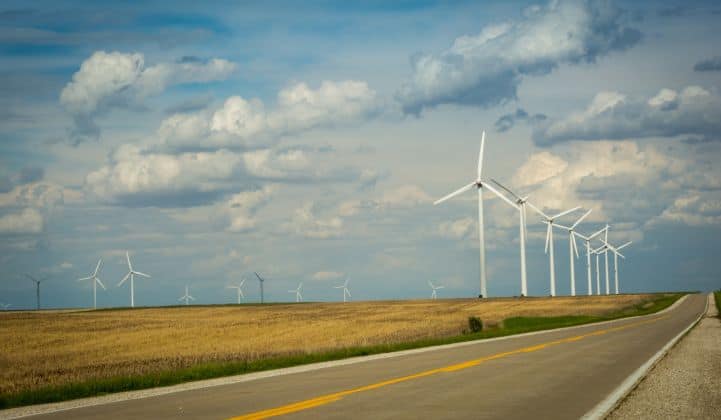
Two powerful backers have signed on to a 2,100-megawatt transmission project to bring renewable generation from Iowa to Illinois.
German energy engineering firm Siemens and Copenhagen Infrastructure Partners, a Danish fund specializing in renewables, acquired the SOO Green Renewable Rail from its developer, the Wall Street Journal reported. Siemens will also supply the high-voltage DC equipment for the effort.
Optimal sites for large-scale renewables development often lie far from the dense urban areas with high demand for power. This creates an arbitrage opportunity for developers who can muster billions of dollars and muscle through years of permitting disputes to bring a new transmission line to completion.
In recent years, the U.S. has built some small reliability-related lines, but large transmission projects to deliver clean energy have seen a string of setbacks and delays, noted Wade Schauer, Americas research director at Wood Mackenzie Power & Renewables.
“I’m pretty skeptical of any transmission line, after so many have failed,” he said.
SOO Green’s developer, Direct Connect Development Company, has a few tricks up its sleeve to increase its odds of completion by 2025.
It will use high-voltage DC cables buried underground on an existing railroad right-of-way, an approach the company said it borrowed from the earlier build-out of fiber optic networks.
That strategy should streamline the permitting needed and minimize disruption to the communities the line will pass through. That doesn’t guarantee there won’t be local opposition, however.
Promises of underground wires didn’t save the Northern Pass project, which aimed to bring hydropower from Quebec to Massachusetts via the scenic White Mountains of New Hampshire. The New Hampshire permitting body rejected that project a week after Massachusetts picked it in early 2018.
Undergrounding also increases construction costs — the WSJ pegged underground lines as nearly twice as expensive as overhead. Then again, a higher cost may not matter so much if it’s the only way to avoid debilitating local resistance.
“It is expensive, but that might be one of the only ways you can get big transmission projects done in the U.S. any more,” Schauer said of the underground approach.
The 349-mile route runs from Mason City, in Iowa wind country, to a substation in Plano, Illinois. It can ship wind power from Minnesota and the Dakotas, which connect to Iowa on the Midcontinent Independent System Operator grid. The link to Illinois brings the power into PJM territory, which includes the mid-Atlantic states.
The constrained transmission options are already factoring into the economics of wind development in the Great Plains, which offers some of the highest-quality wind resources in the country. The sheer concentration of wind farms has already pushed power prices lower in Iowa, Schauer said.
“When wind output is high, the prices are pretty low,” Schauer said. “There are opportunities for wind farms to make more money if that bottleneck could be alleviated.”
In the long run, the difficulty building new long-distance transmission will pose an obstacle for plans to significantly decarbonize the U.S. electricity system.
Enhanced transmission capacity makes a highly renewable grid more efficient by shifting generation from the more productive areas to the less sunny and windy parts. It forms a crucial pillar of some plans to achieve a mostly carbon-free grid.
SOO Green could set a new paradigm for how to win approval for clean energy wires infrastructure — if it doesn’t end up as another warning sign of how hard it can be.
